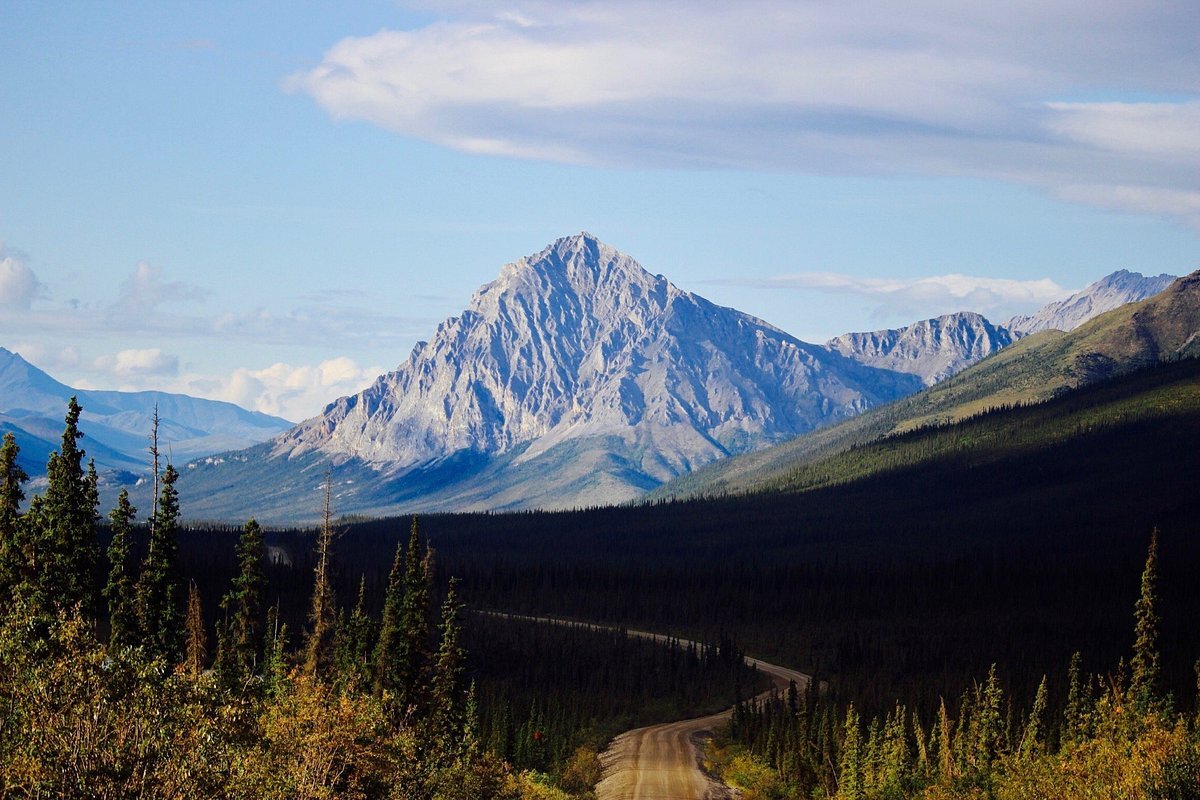Hidden Frost Polygon Fields Of Alaska’s Brooks Range

Have you ever heard of the frost polygon fields in Alaska's Brooks Range? These unique natural formations are a sight to behold. Found in one of the most remote areas of the United States, the frost polygons are created by the freezing and thawing cycles of the ground. This process forms striking geometric patterns that look like something out of a science fiction movie. Visiting these fields offers a rare glimpse into the power of nature's artistry. Whether you're a seasoned traveler or just someone who loves discovering new wonders, the frost polygon fields should be on your bucket list.
Discovering the Hidden Frost Polygon Fields of Alaska's Brooks Range
Alaska's Brooks Range holds secrets waiting to be uncovered. Among these are the fascinating frost polygon fields. These natural wonders form due to the freeze-thaw cycles in permafrost regions, creating unique patterns on the ground. Let's explore some of the most intriguing frost polygon fields in this remote and beautiful area.
1. Atigun Valley
Atigun Valley offers a breathtaking view of frost polygons. Located along the Dalton Highway, this valley is accessible yet feels like a hidden gem. The patterns here are particularly striking, with large, well-defined polygons that stretch across the landscape.
2. Toolik Lake
Toolik Lake, a research hub, is another prime spot for observing frost polygons. The lake's surroundings are dotted with these formations, making it a perfect place for both scientists and nature enthusiasts. The polygons here vary in size and shape, providing a diverse visual experience.
3. Anaktuvuk Pass
Anaktuvuk Pass, a small village in the Brooks Range, is surrounded by stunning frost polygon fields. The patterns here are more subtle but equally captivating. This area offers a unique blend of cultural and natural beauty, as it is home to the Nunamiut people.
4. Sagavanirktok River Valley
The Sagavanirktok River Valley, often referred to as the Sag River Valley, boasts some of the most extensive frost polygon fields in the Brooks Range. The valley's wide, open spaces allow for uninterrupted views of these natural formations, making it a must-visit for anyone interested in permafrost landscapes.
5. Chandalar Shelf
Chandalar Shelf, located along the Dalton Highway, is another excellent location for viewing frost polygons. This area is known for its dramatic landscapes and the intricate patterns formed by the freeze-thaw cycles. The polygons here are often highlighted by the surrounding tundra, creating a striking contrast.
6. Galbraith Lake
Galbraith Lake, situated near the northern edge of the Brooks Range, offers a serene setting to observe frost polygons. The lake's clear waters and the surrounding polygon fields create a picturesque scene that is perfect for photography and quiet reflection.
7. Happy Valley
Happy Valley, despite its name, is a remote and rugged area in the Brooks Range. The frost polygons here are some of the most well-preserved, offering a glimpse into the geological processes that shape this unique landscape. The isolation of Happy Valley adds to its allure, making it a true hidden treasure.
8. Kuparuk River Basin
The Kuparuk River Basin, located in the northern part of the Brooks Range, features extensive frost polygon fields. This area is less frequented by tourists, providing a more solitary experience for those who venture here. The polygons in this basin are particularly large, creating an impressive sight.
9. Colville River Delta
The Colville River Delta, where the Brooks Range meets the Arctic Ocean, is a unique location for observing frost polygons. The delta's wetlands and river channels create a dynamic environment where polygons form and evolve. This area offers a fascinating look at the interaction between land and water in a permafrost region.
10. Prudhoe Bay
Prudhoe Bay, known for its oil fields, also has some remarkable frost polygon fields. The industrial backdrop contrasts with the natural beauty of the polygons, creating a unique setting. This area provides an interesting perspective on how human activity and natural processes coexist in the Arctic.
The Beauty of Alaska's Brooks Range
Alaska's Brooks Range offers a unique glimpse into nature's wonders. The frost polygon fields are a testament to the power of ice and time. These formations, created by the freeze-thaw cycles, paint a stunning picture of the region's geological history. Visiting this remote area isn't just about seeing the sights; it's about understanding the processes that shape our world.
Exploring the Brooks Range, you'll find more than just frost polygons. The area is rich with wildlife, breathtaking landscapes, and opportunities for adventure. Whether you're hiking, photographing, or simply soaking in the views, this part of Alaska promises unforgettable experiences.
So, if you're looking for a destination that combines natural beauty with scientific intrigue, the Brooks Range should be on your list. The frost polygon fields are just the beginning of what this incredible region has to offer.

